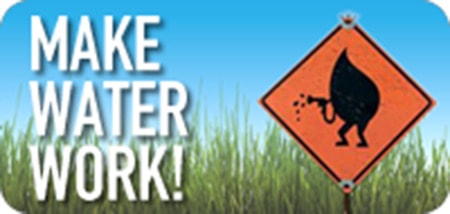Automatic irrigation systems are a real time-saver for those with property to maintain, but they can’t be just ignored after they’ve been installed – and regular monitoring is especially important under this year’s drought conditions, according to the experts.
Components wear out, become damaged, get nudged out of position and the system itself should be set up to respond to seasonal and weather changes.
Automated irrigation systems need a little guidance and monitoring to ensure they’re not wasting water. In fact, it would be wise to do a check on the system once a month, suggests Bruce Naka, a certified irrigation system designer and consultant. He has more than 25 years’ experience in the Okanagan and is certified by the Irrigation Industry Association of BC (IIABC).
The first thing to look for is spots in your landscape that are either too wet or too dry after the system has been on. In particular, he suggests you make sure it’s not watering concrete, asphalt or siding. In some cases, a sprinkler head just needs to be adjusted, but in others, it could be worn out and need replacing.
“You can save money and conserve water by ensuring your system is working right,” he says.
Under drought conditions such as the Okanagan is experiencing this year, you may wish to turn off the zones that water your lawn and let the grass go dormant for the remainder of the season, or you may decide to water the lawn less often. A rule of thumb is lawns need just over an inch of water a week (Contact your local water utility for a Make Water Work water-measuring Frisbee, or put out a tin can, to measure how much it gets now.)
However, Naka points out it’s important to know what type of soil your lawn is in. It would need less if it’s in a clay soil base, and more if in sand or gravel.
“Lawn will come back. Many trees and shrubs won’t. So, to use the water you have most efficiently, concentrate on the shrubs and let the lawn go,” he advises. Conserve water by ensuring your irrigation system uses drip irrigation for trees and shrubs.
He also recommends training your plants to be drought-tolerant by not providing them with more than the minimum amount of water they need to survive. That way, they will grow deep roots and be healthier overall.
If you’re looking at installing an automatic irrigation system, he recommends you look for a certified contractor. Go to the IIABC website for a list: irrigationbc.com
Ask your installer about high efficiency nozzles and you ensure you are familiar with the controller and that you can program it before the contractor is finished. They should also provide you with a drawing of the system, including where all the valves are, so you can shut them off, if necessary.
If purchasing a home, ask for a map of the system showing where the valves and sprinkler heads are.
Most systems now have rain sensors which can be added, so the system shuts down when there’s enough rain; and there’s a mini weather station which can be added to some, which measures evapo-transpiration rates, so water use is reduced when it’s cooler out.
With 24 per cent of all Okanagan water used on household lawns and gardens, and less water available per person than anywhere in Canada, valley residents are encouraged to reduce outdoor water use this summer.
Take the pledge to Make Water Work at www.MakeWaterWork.ca for your chance to win over $8,000 in prizes, including a Grand Prize of a $6,000 WaterWise yard upgrade.
Take the pledge to:
•Water plants. Not pavement.
•Water between dusk and dawn.
•Don’t mow. Let it Grow. Leave lawn 5-8 cm (2-3 inches) tall.
•Leave grass clippings as mulch.
•Top dress with compost; and
•Change out some lawn for drought-tolerant turf and/or native and low-water variety plants.
Make Water Work is an initiative of the Okanagan Basin Water Board and its Okanagan WaterWise program.
